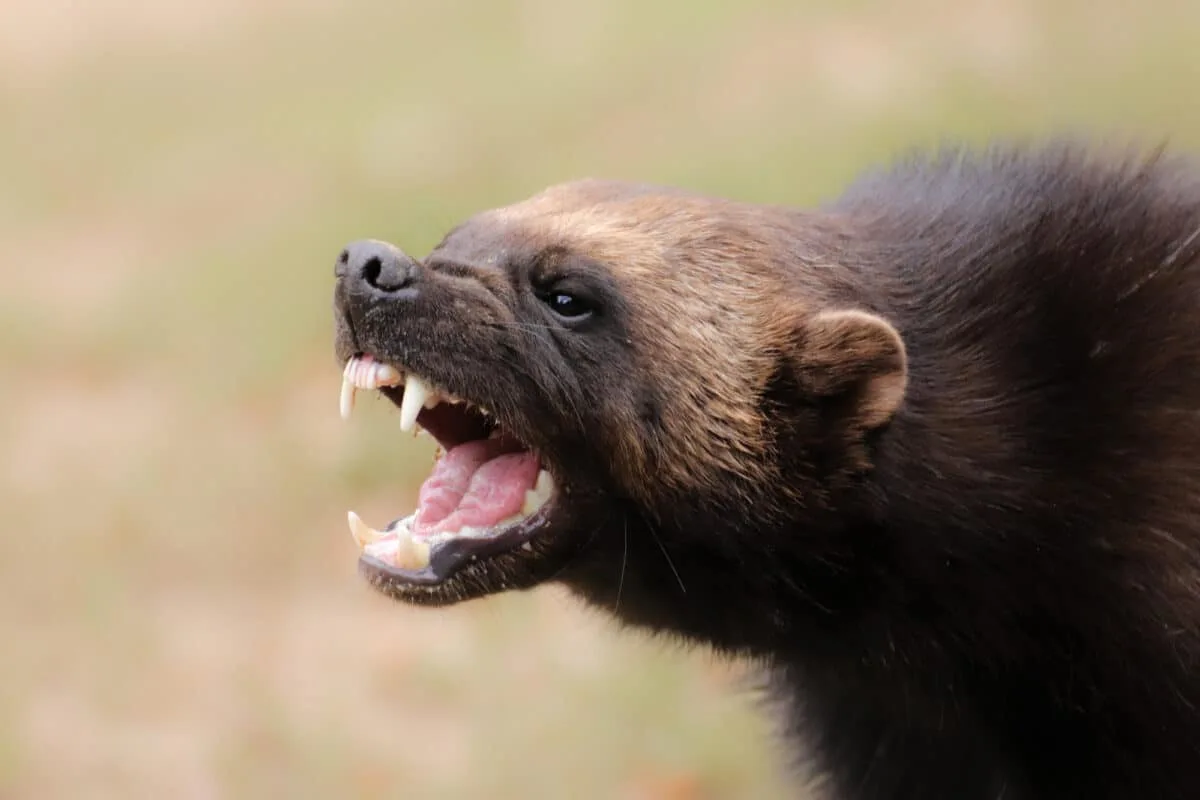In the depths of a secluded forest, where untamed wilderness reigns supreme, a legendary showdown unfolds that captivates the imagination and awakens our primal instincts. So, prepare to be enthralled as we delve into the heart-stopping encounter between nature’s most fearsome adversaries: the indomitable wolverine and the mighty bear.
Moreover, this epic clash of titans reminds us of the raw power that permeates the untamed realms, where survival and dominance hang in the balance.
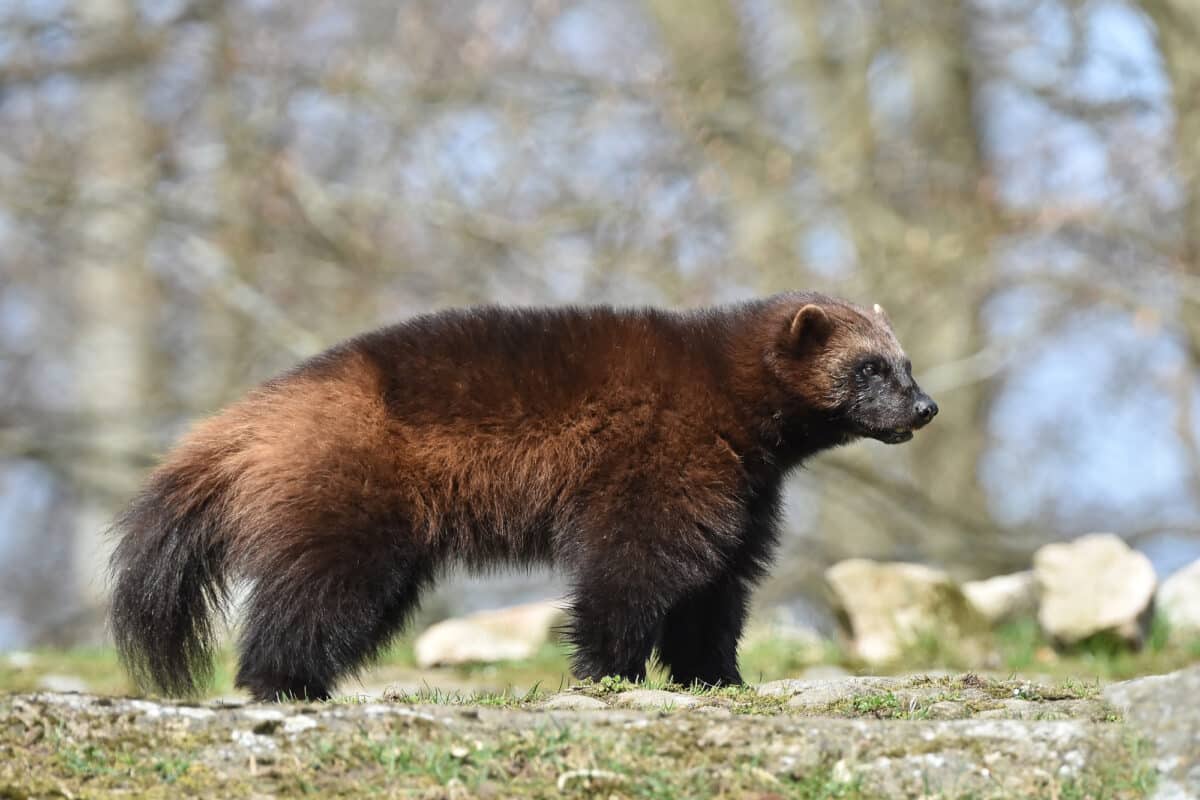
Jump ahead to any section below!
Comparison Table
| Wolverine | Bear | |
| Habitat | Forests, mountains, tundra | Various habitats (forests, mountains, tundra, etc.) |
| Size | Smaller (about 25-35 inches in length) | Larger (varies based on species) |
| Weight | 20-55 pounds | Varies (100-1,500+ pounds) |
| Diet | Carnivorous | Omnivorous |
| Lifespan | 8-13 years | Varies (5-30+ years) |
| Physical | Strong jaws, sharp claws, excellent sense of smell | Powerful build, sharp claws, thick fur, keen sense of smell |
| Characteristics | sharp claws, | build, sharp |
| Behavior | Solitary, territorial | Solitary or social |
The Wolverine
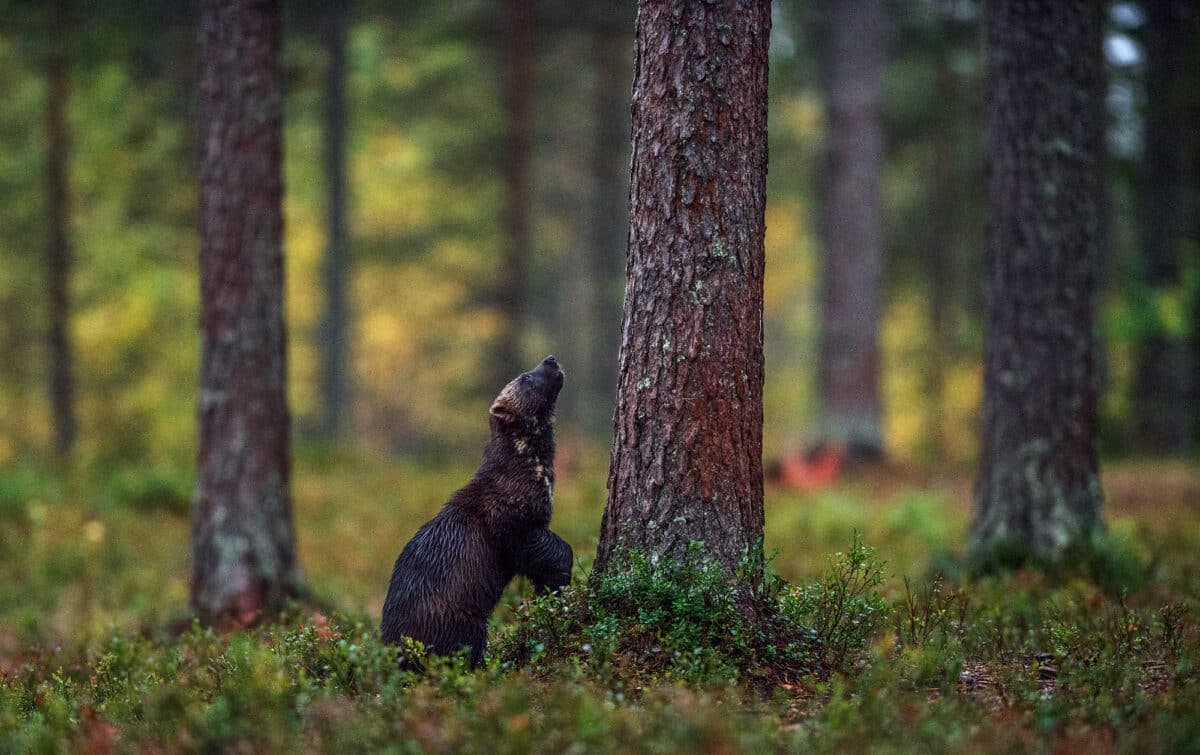
Firstly, this remarkable creature possesses various captivating characteristics and physical attributes, making it a point to be reckoned with.
Characteristics And Physical Attributes
The Wolverine is the largest land-dwelling member of the Mustelidae family, which includes otters, weasels, and badgers. Residing predominantly in the Arctic and boreal regions of North America, Europe, and Asia, the Wolverine also boasts an impressive set of characteristics and physical attributes.
Size And Appearance
Despite its relatively small size compared to other large predators, the Wolverine displays incredible strength and resilience. However, adults typically measure between 26 to 34 inches in length, excluding the tail, which adds 7 to 10 inches. They also stand about 14 to 18 inches tall at the shoulder and weigh anywhere between 20 to 70 pounds, depending on their gender and habitat.
Adaptations For The Cold
Furthermore, the Wolverine’s thick fur coat insides protect them against the harsh Arctic climates it inhabits. Their fur is primarily dark brown, with lighter patches on the throat and chest. This camouflage allows them to blend effortlessly with their snowy surroundings, providing an advantage during hunting and stalking.
Powerful Build And Jaws
The Wolverine possesses a compact, muscular body with robust limbs and formidable jaws. Its strong build then enables it to traverse difficult terrains, climb trees, and swim swiftly. It can also effectively grip and tear apart prey or dig burrows in the snow with sharp, non-retractable claws.
Hunting And Survival Strategies
Surviving in demanding environments requires exceptional hunting and survival strategies. The Wolverine is adept at utilizing its remarkable skills to secure prey and protect its territory.
Opportunistic Diet
Wolverines are opportunistic omnivores, consuming diverse food sources. Their diet primarily consists of small to medium-sized mammals, including rodents, hares, and ground squirrels. Additionally, they scavenge carrion, feed on berries and roots, and even attack larger prey like deer when necessary.
Fearless Nature
Lastly, the Wolverine’s reputation for ferocity and fearlessness is well-deserved, making it one of the most formidable predators in the animal kingdom.
Check out: Discover a Lemming Confronting A Snowy Owl.
The Bear: Characteristics And Physical Attributes
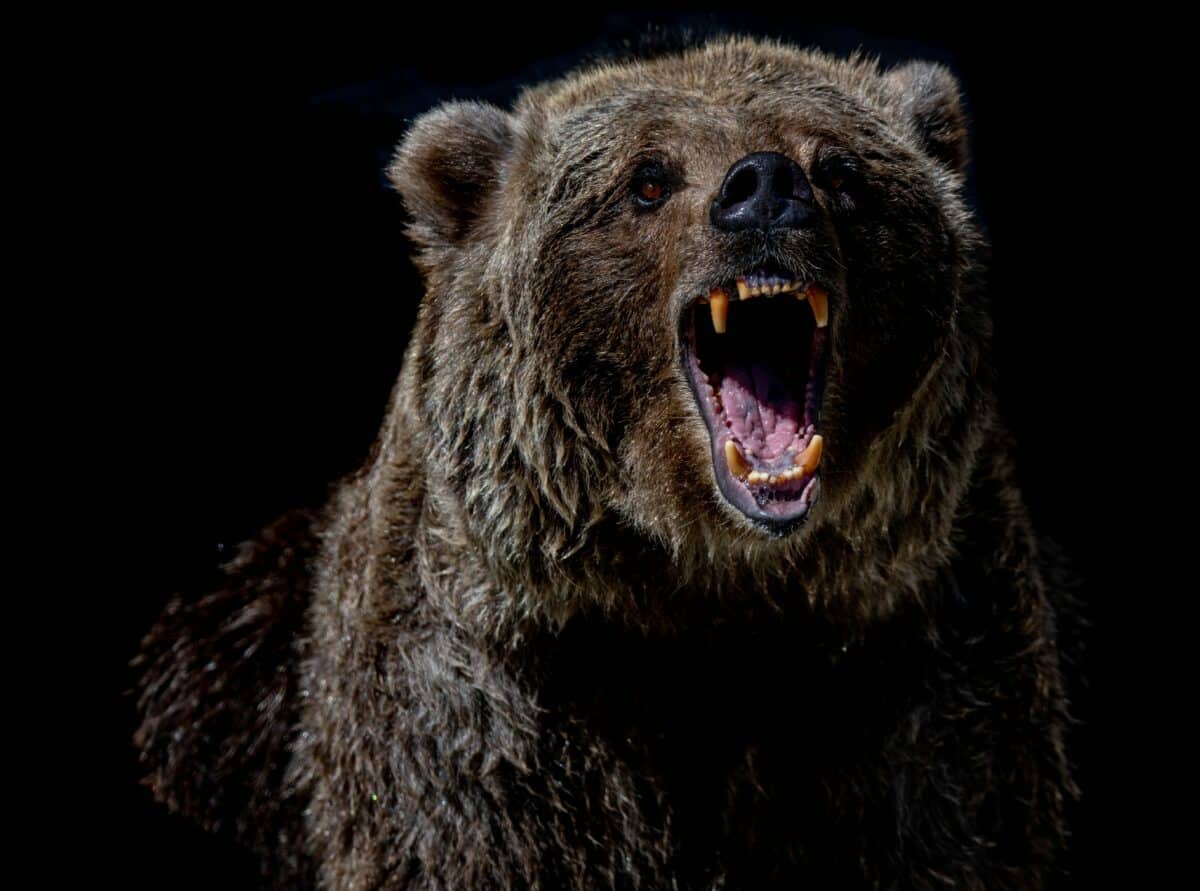
Bears are fascinating creatures that captivate our imagination with their unique features and impressive physical attributes.
Size And Appearance
Firstly, bears vary in size depending on the species. The largest bear species, the polar bear, can reach staggering weights of up to 1,500 pounds (680 kilograms) and stand over 10 feet (3 meters) tall when on their hind legs.
Meanwhile, the smallest bear species, the sun bear, weighs around 60-150 pounds (27-68 kilograms). Bears also have stocky bodies, rounded ears, and short tails. Their fur comes in various colors, including brown, black, white, and even bluish or cream hues.
Physical Adaptations
Bears possess several physical adaptations that contribute to their survival. One notable adaptation is their strong, muscular limbs, which allow them to engage in powerful movements like climbing trees, digging dens, and swimming. Their sharp claws give them excellent grip and aid in capturing prey and searching for food.
Hunting And Survival Strategy
Bears have a flexible diet and consume both plant and animal matter. The Grizzly bear is omnivorous and consumes a mix of plant matter, insects, fish, and small mammals. Their dietary flexibility allows them to adapt to changing food availability throughout the year.
Ambush Predators
Bears employ different hunting techniques depending on their habitat and prey. Some species, like the brown bear, use an ambush strategy, patiently waiting to capture their prey. They blend in with their surroundings and strike with remarkable speed and force.
Strength
Bears are renowned for their impressive size and remarkable strength, which sets them apart from many other animals in the wild. Here’s a closer look at their physical prowess and impact on their ecological roles.
Check out The Eight (8) Bear Species of the World | Bear With Us
Setting The Scene
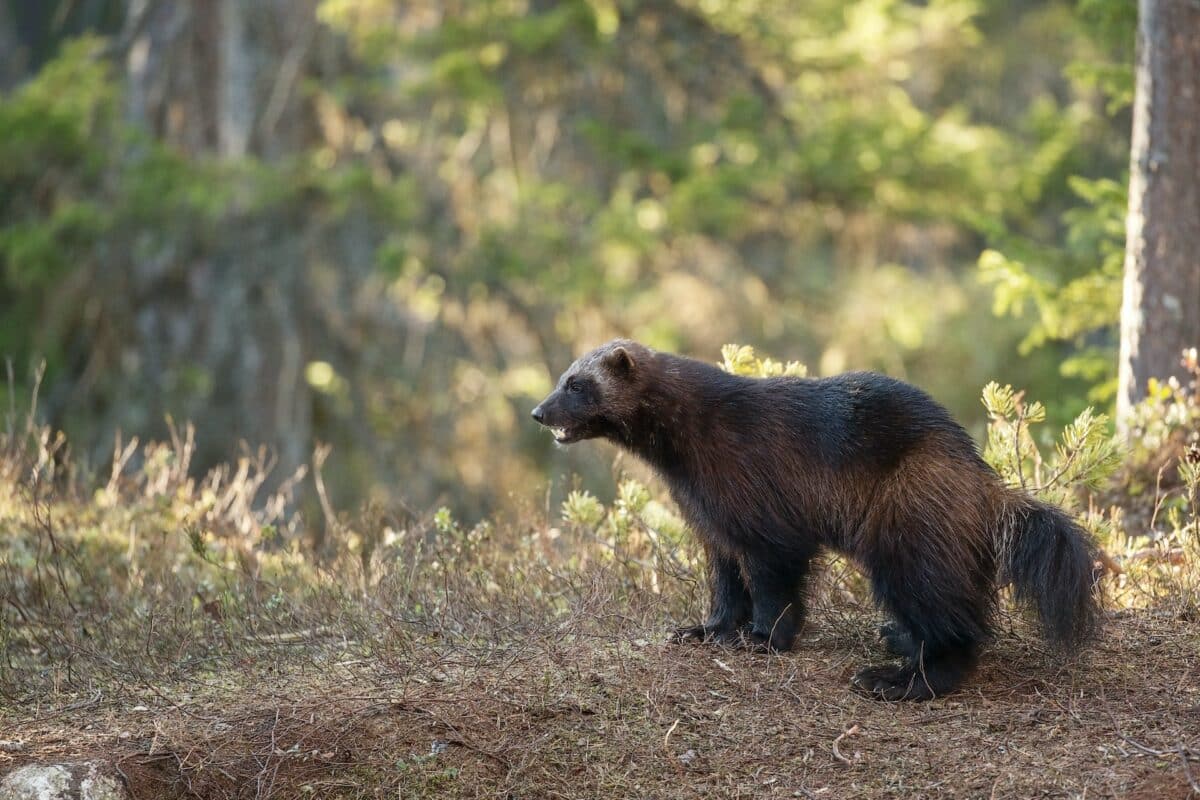
As we venture deeper into the secluded forest, the air becomes thick with anticipation. The crunch of leaves beneath our feet echoes through the canopy as we make our way toward the heart of the wilderness. Rustling branches and the distant roar of a river accompany our journey into the untamed realms, where predators reign supreme, and the laws of nature have no mercy.
Check out: Explore Black Bear Habitats in Upstate New York.
The Epic Clash Of Titans
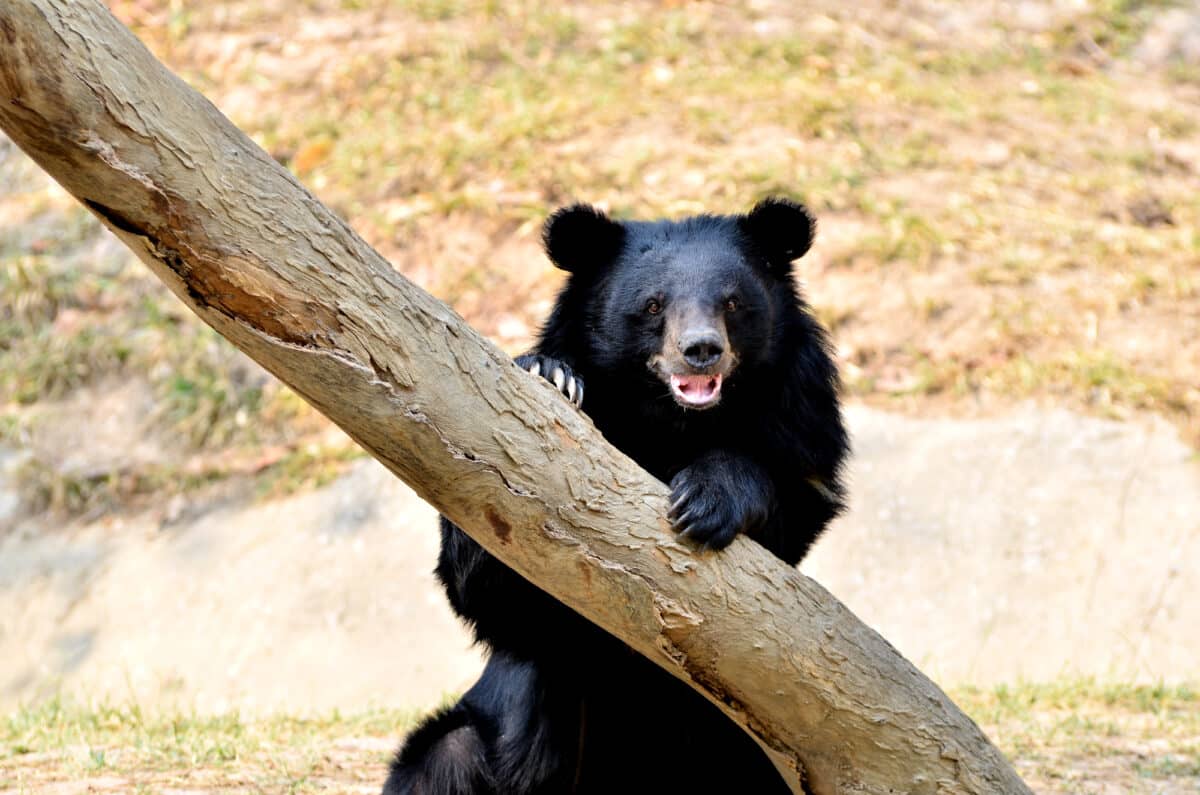
Guttural growl blares in the distance, followed by clawed footsteps and tearing trees. Our hearts race as we realize we are about to witness an epic showdown between nature’s most powerful beasts: the wolverine and the bear.
As we approach the battle scene, we catch glimpses of the wolverine darting around the bear’s massive frame, dodging the swipes of razor-sharp claws. With lightning-fast reflexes and fierce determination, the wolverine manages to inflict a series of deep, bleeding wounds on the bear’s thick hide. But the bear is no pushover.
Roaring with fury, he swings his heavy paw with deadly force, sending the wolverine tumbling through the air. In an instant, the battle is turned on its head as the bear pins the wolverine to the ground with crushing force.
Check out: Discover The Marvels Of The Australian Shepherd.
The Raw Power Of Untamed Wilderness
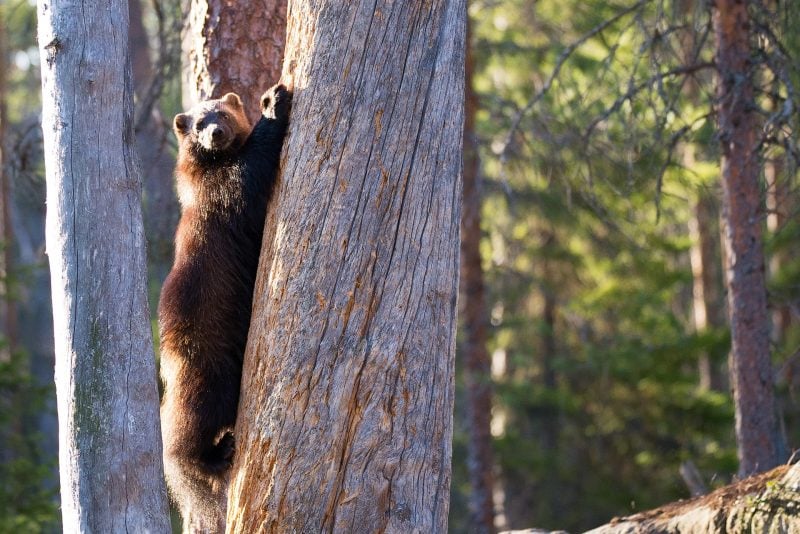
As we watch the battle unfold, we are struck by the untamed wilderness’s raw power and unbridled ferocity. In this unspoiled realm, predators must fight tooth and claw for survival, and only the strongest and most cunning creatures will emerge victorious.
Despite the odds stacked against it, the Wolverine never backs down from this seemingly imbalanced fight. Its tenacity and sheer will to survive are a testament to the primal forces that govern the untamed realms and the beauty and brutality that coexist within this awe-inspiring wilderness.
Overall, as the battle comes to its conclusion, we are left with a newfound respect for the indomitable spirit of these beasts and the raw power that permeates this natural world. Moreover, in the depths of the forest, where fury ignites and the laws of nature reign supreme, survival is the only law, and only the fittest will brave the challenges ahead.
Check out: How To Identify & Prevent King Cobra Bites.
Analysis Of The Encounter
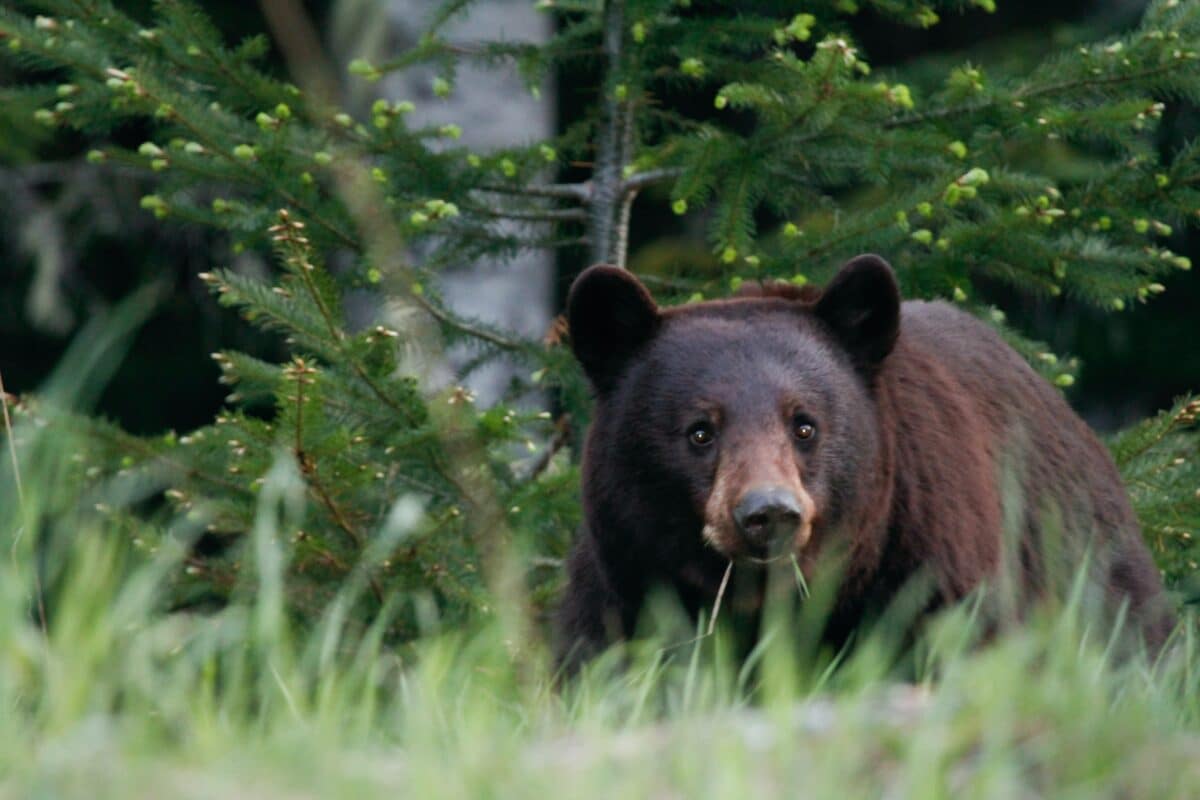
The clash between the wolverine and the bear displayed pure power and ferocity. Both animals fought for survival, and neither was willing to back down. It was evident from the beginning that this would not be an ordinary fight.
Throughout the encounter, the wolverine used its intelligence to stay alive, constantly attacking the bear’s weakest points from the side or behind.
Clearly, the wolverine was aware that it could not afford to be caught by the bear, and thus, it had to be strategic in its movements.
The bear relied on its size and brute strength, hoping to overpower the wolverine. However, this did not deter the wolverine, which continued to attack enthusiastically, even after sustaining several injuries.
Check out: Gorilla Vs. Cheetah.
The Outcome Of The Fight

The fight’s outcome was something few could have anticipated. Despite the bear’s size and strength, the wolverine emerged victorious. It was a remarkable feat, considering that the wolverine was much smaller and lighter than the bear.
However, it was clear that the wolverine’s agility and intelligence had won the day.
After the fight, the wolverine limped away, visibly injured but victorious.
On the other hand, the bear lay motionless on the ground, succumbing to the injuries inflicted by the wolverine. Overall, it was a stark reminder of the cruelty of nature, wherein survival is determined by strength, cunning, and adaptability.
Key Points
| The Wolverine is the largest land-dwelling member of the Mustelidae family. |
| Bears are renowned for their impressive size and remarkable strength |
| The Wolverine possesses a compact, muscular body with robust limbs and formidable jaws. |
| Bears have strong, muscular limbs, which allow them to engage in powerful movements. |
| The clash between the wolverine and the bear displayed pure power and ferocity. |
The Final Verdict
This extraordinary encounter serves as a reminder of the complex dynamics within nature, where survival hinges on the ability to adapt, strategize, and exploit one’s strengths. Furthermore, it showcases the intricate balance between competition and coexistence in the wild, where each predator plays a crucial role in maintaining the delicate ecosystem.
Overall, it inspires us to appreciate and protect the natural world, ensuring that future generations can continue marveling at the captivating encounters and untold wonders in our wilderness.
If you enjoyed this article as much as me, check out our related articles below!
Next up: Watch Two Kids Swim Near Great White Shark, Discover New York’s Hidden Threat: Poisonous Spiders, and Explore Pennsylvania’s Coyote Population.
- Camper Finds Himself Surrounded By Alligators In Middle Of Night - May 3, 2024
- Have You Ever Seen A Sword Fighting Dog? - May 3, 2024
- Pro Athlete Rescues Stray Dog Who Kept Showing Up To Practice - May 2, 2024

